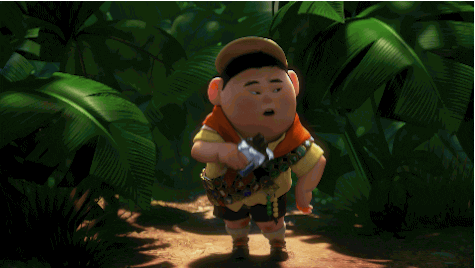
This is a brief profile of one of Pixar's influential animators. Although his name may not be as synonymous with Pixar as Brad Bird or John Lasseter, his work speaks volume for itself. Peter Sohn has not only animated but also voiced, directed, and produced a great many of Pixar's films. A jack of all trades, his contributions spans numerous departments. Sohn has films like Finding Nemo, Ratatouille, Up, The Incredibles, Luca, Brave and many, many more.
The Beginning
Sohn’s love story with animation began at a very young age. He has always been “very inspired by animation and that process” and in high school he tried to not only learn animation but art as well in order to be self sufficient as an animator. He describes animation as not only a calling but an integral part of his identity. This is best described in the following segment taken from an interview with Medium:
“Look, when I was growing up in New York our neighborhood was pretty segregated — the Koreans stayed in one place, Puerto Ricans stayed in another place. My dad had a grocery store on Burke Avenue near 241st Street in the Bronx. I feel as if I missed a great deal because of identifying with a group purely according to race. I judged myself by my skin color. But once I went to art school, I started to connect to a new kind of race — a new tribe — a kind of filmmaker and nerd tribe! I absolutely connected to them and from that point on, I considered myself part of the filmmaking race!”
His Creative Process

There are a multitude of truly interesting ways Sohn approaches his animation. The first of which is how he attempts to physically embody characters before even approaching the drawing table. In an interview by Medium (which will be the primary source for this blog post), Sohn outlines how he tackled the character of Russel in Pixar’s UP.
He is described by the interviewer as “hoisting on (his) overloaded backpack and physically embodying the character of this lovable little Boy Scout” To which he elaborates that “It’s rarely just about the external form to start. It’s always about the inside of the character.” Essentially, what he is saying here is that in order to contextualize character that are rooted in reality, he first needs to understand the internalized elements that make people people.

To do so, he begins by asking himself questions like does the character eat a lot? does the character carry lots of things? Is he extroverted or introverted? It is questions like these that transform one dimensional characters into the three dimensional beings that we come to love so much. After this, Sohn likes to take whatever ideas he has of the characters and draw out different poses in a way to capture a gesture or emotion rather than a basic front facing, T posed figure. This is because much of the life that animation would bring would not be present in the drawings. Drawing the characters in various poses doing menial things often brings forth the hidden characteristics previously explored and is much more telling of the characters psycho-physio characteristics.
“There are many routes to how you explore character, but it obviously requires hours of drawing — poking at the eyes, poking at the shape, and then finding situations that the character would be in”

Nonetheless, Sohn makes an interesting point that he doesn’t alway begin the animation process the same way. He can sometimes start of with the world and setting, sometimes with the characters, and others with simply the story. In the animation The Good Dinosaur, which he worked on, he began with what he describes as a “nugget” he says that he drew “a giant, long-necked apatosaurus with his head on the ground plowing miles of farmland, and there was something interesting about a scenario where dinosaurs have evolved to farm and form an agrarian kind of community.” According to Sohn, it is these fluid techniques and approaches that garners the best results.
“It’s a really fun and kind of intense process. You start out just drawing funny doodles and silly drawings, but then there is a line that you follow until you hit some sort of truth.”

Sohn also likes to animate in a way that may sometimes veer from the identity that Pixar conforms to. For instance, in the Good Dinosaur, there was a “photo-real quality to the natural world” which gives the film a genuine quality that aids the audience in believing that the character can truly get hurt when it is suggested.